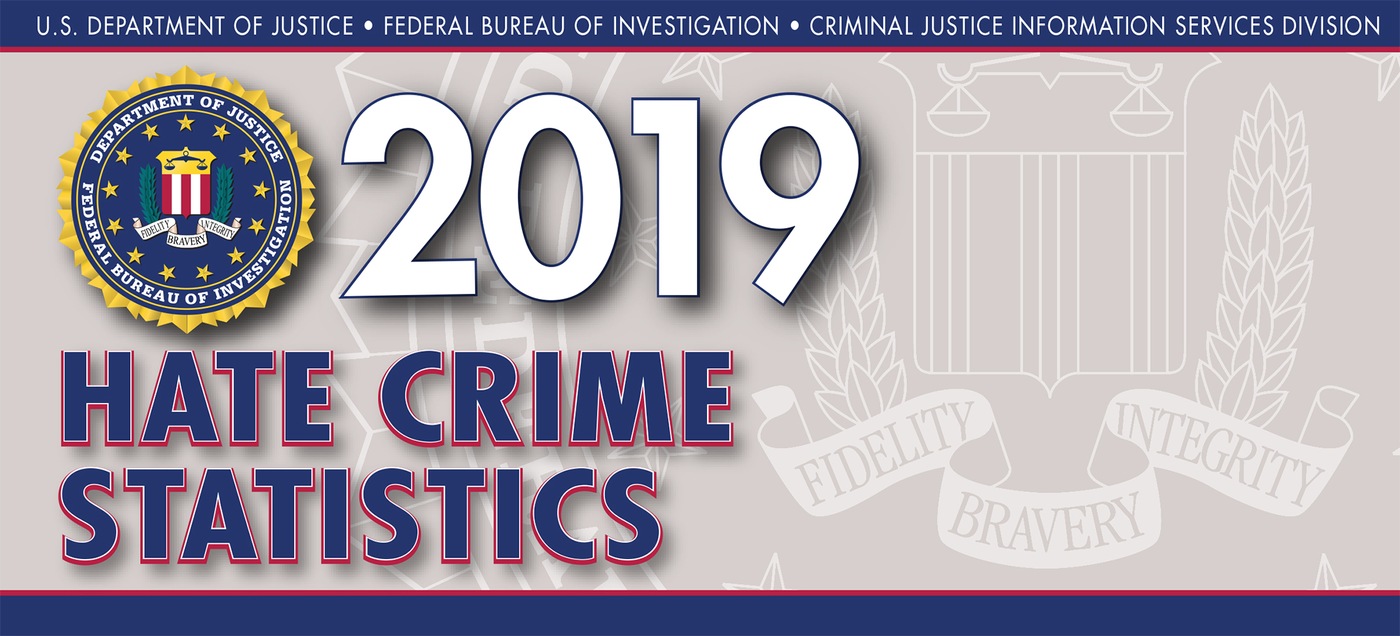(Washington, D.C.) – Newly released FBI hate crime statistics for 2019 paint a distressing picture of a crisis in growing bias-motivated crime paired with declining transparency from police, the co-founder of the Matthew Shepard Foundation said Monday.
“In many ways it’s the worst of both worlds,” said Judy Shepard. “Hate crimes continued their five-year rise and were more frequently violent, even at the same time that fewer law enforcement agencies managed to participate in voluntary reporting.
“Had more police and sheriff’s departments tracked and disclosed these crimes, I shudder to think how much higher the numbers would be,” she added.
In 2019, 451 fewer law enforcement agencies participated in the FBI’s Hate Crime Statistics Program than in 2018, but the number of reported hate crimes increased from 7,120 in 2018 to 7,314 in 2019.
Furthermore, over 86 percent of the agencies that did participate actually did so only to report zero hate crimes in their jurisdictions – statistically, a near impossibility.
“As advocates working with communities and law enforcement agencies at the local level, we know that hate crimes are occurring and are deeply disturbed that these crimes do not get reflected in the data,” said Arusha Gordon, Associate Director of the James Byrd Jr. Center to Stop Hate at the Lawyers’ Committee for Civil Rights Under Law, the Foundation’s partner in training more than 1,200 law enforcement professionals since 2018 on how to detect, investigate, report and prosecute bias crimes.
“When communities and individuals are targeted in a hate crime, and law enforcement fails to capture the bias-motivated nature of the crime in their reporting, that sends a message to the community that law enforcement fails to understand what hate looks like,” Gordon noted.
Multiple credible and exhaustive federal crime victimization surveys and studies consistently find that as many as a quarter-million such crimes occur annually in the United States, but FBI annual reports seldom turn up anything close to 10,000.
Expert consensus suggests the undercount has numerous important reasons: fear of law enforcement, fear of revictimization, of retaliation and of media and public attention. With police brutality occupying an ever-greater share of diverse communities’ attention, these factors appear poised only to grow.
“We recognize that some vulnerable individuals who have been historically disenfranchised and targeted for violence and discrimination by law enforcement and others in power are reluctant to report their victimization to their local police,” said Cynthia Deitle, the Foundation’s Director of Civil Rights Reform. “For these individuals, the police were never seen as their guardians, nor were the police trusted to investigate crimes committed against them.
“We deeply appreciate their position, and in too many ways, share it,” she continued. “That’s why we will continue to urge police officers to break through these barriers by doing the hard work toward more trusting relationships with those most at risk for bias-motivated violence.”
Inside the Data
Identities whose victimization increased in 2019 include gay, bisexual, the mentally disabled, females, transgender, gender-nonconforming, Asian, Latinx, Arab, Native Hawai’ian and Pacific Islander, and practitioners of the Jewish, Catholic and Mormon faiths. Additionally, multiple-bias incidents exploded, well over doubling.
Likewise, the severity of the year’s hate crimes showed troubling increases, with simple and aggravated assaults rising by five percent and murders more than 112 percent.
While grim, the report did include a few glimmers of hope for future improvements. Wyoming, Matthew Shepard’s home and one of only three states still lacking a state-level hate crime statute, reported five hate crimes from four cities and its sole university police department. The state had reported none in 2018 and only one the prior year.
And while overall police department participation in the report declined, those agencies whose personnel participated in the Foundation and the Lawyers’ Committee trainings did all submit their reports – suggesting that sustained outreach and community accountability are effective tools for improving the public’s right to know about bias threats.

